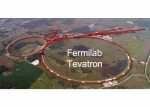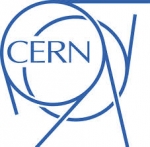Displaying items by tag: particle accelerator
Jefferson Laboratory
Thomas Jefferson National Accelerator Facility (Jefferson Lab) is one of 17 national laboratories funded by the U.S. Department of Energy. The lab also receives support from the City of Newport News and the Commonwealth of Virginia.
The lab's primary mission is to conduct basic research of the atom's nucleus using the lab's unique particle accelerator, known as the Continuous Electron Beam Accelerator Facility (CEBAF). Jefferson Lab also conducts a variety of research using its Free-Electron Laser, which is based on the same electron-accelerating technology used in CEBAF.
In addition to its science mission, the lab provides programs designed to help educate the next generation in science and technology, and to engage the public.
GSI Helmholtz Centre for Heavy Ion Research
The GSI Helmholtz Centre for Heavy Ion Research (German: GSI Helmholtzzentrum für Schwerionenforschung GmbH) is a federally and state co-funded heavy ion research center in the Wixhausen suburb of Darmstadt, Germany. GSI was founded in 1969 as the Society for Heavy Ion Research (German: Gesellschaft für Schwerionenforschung), abbreviated GSI, to conduct research on and with heavy-ion accelerators.
The laboratory performs basic and applied research in physics and related natural science disciplines. Main fields of study include plasma physics, atomic physics, nuclear structure and reactions research, biophysics and medical research. The lab is a member of the Helmholtz Association of German Research Centres.
GSI operates a worldwide unique large-scale accelerator facility for heavy ions and currently employs about 1.100 people. In addition approximately 1.000 researchers from universities and other research institutes around the world use the facility for their experiments.
GSI is a limited liability company (Ger. GmbH). Associates are the German Federal Government (90 per cent), the State of Hessen (8 per cent), the State of Rhineland-Palatinate (1 per cent) and the Free State of Thuringia (1 per cent). They are represented in the board of directors by the Federal Ministry of Education and Research and the respective Ministries. GSI is a member of the Helmholtz Association, Germany's largest research organisation.
The goal of the scientific research conducted at GSI Helmholtzzentrum für Schwerionenforschung is to reach a better understanding of the structure and behavior of the world that surrounds us.
Tevatron
The Tevatron was a circular particle accelerator in the United States, at the Fermi National Accelerator Laboratory (also known as Fermilab), and holds the title of the second highest energy particle collider in the world after the Large Hadron Collider (LHC) near Geneva, Switzerland.
The Tevatron was a synchrotron that accelerated protons and antiprotons in a 6.86 km, or 4.26 mi, ring to energies of up to 1 TeV, hence its name. The main achievement the Tevatron was discovery in 1995 of the top quark—the last fundamental fermion predicted by the standard model of the particle physics. On July 2, 2012, near the end of Tevatron's operation, scientists of the CDF and DØ collider experiment teams at Fermilab announced the findings from the analysis of around 500 trillion collisions produced from the Tevatron collider since 2001, and found that the existence of the suspected Higgs boson was highly likely with only a 1-in-550 chance that the signs were due to a statistical fluctuation. The findings were confirmed two days later as being correct with a likelihood of error less than 1 in a million by data from the LHC experiments.
The Tevatron was completed in 1983 and significant upgrade investments were made in 1983–2011. The Tevatron ceased operations on 30 September, 2011,[3] due to budget cuts and because of the completion of the LHC, which began operations in early 2010 and was far more powerful (planned energies were two 7 TeV beams at the LHC compared to 1 TeV at the Tevatron). The main ring of the Tevatron will probably be reused in future experiments, and its components may be transferred to other particle accelerators.
CERN
The European Organization for Nuclear Research (CERN) is an international organization whose purpose is to operate the world's largest particle physics laboratory. Established in 1954, the organization is based in the northwest suburbs of Geneva and has 20 European member states.
The term CERN is also used to refer to the laboratory, which employs just under 2,400 full-time employees, 1,500 part-time employees, and hosts some 10,000 visiting scientists and engineers, representing 608 universities and research facilities and 113 nationalities.
CERN's main function is to provide the particle accelerators and other infrastructure needed for high-energy physics research - as a result, numerous experiments have been constructed at CERN following international collaborations. It is also the birthplace of the World Wide Web. The main site at Meyrin has a large computer centre containing powerful data-processing facilities, primarily for experimental-data analysis; because of the need to make these facilities available to researchers elsewhere, it has historically been a major wide area networking hub.




